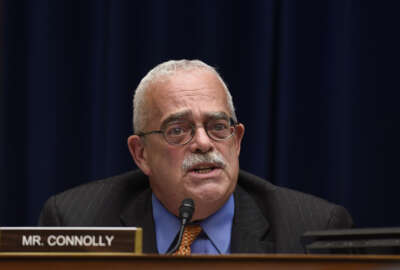While the ink on the deal hasn’t dried yet, more than 200,000 postal employees could see a series of pay raises down the road, now that one of the major postal unions has reached a provisional labor agreement with the U.S. Postal Service.
The National Association of Letter Carriers, which represents more than 213,000 postal employees, announced May 12 that it has reached a tentative agreement on a labor contract that would last until September 2019. All career and non-career postal employees represented by NALC would receive two pay raises, as well as a pay-grade consolidation that would give postal workers currently on the higher grade yet another wage increase.
According to the tentative labor contract, letter carriers would receive a 1.2 percent pay raise that would retroactively start on Nov. 26, 2016, then receive a 1.3 percent pay raise that would take effect on Nov. 25 this year.
Postal employees currently at Grade 2 of NALC’s letter carrier pay scale would receive a 2.1 percent pay raise, effective Nov. 24, 2018, while Grade 1 employees would move up to Grade 2.
In addition to the pay raises, postal employees would also receive seven cost-of-living adjustments, based on the Consumer Price Index (CPI-W) throughout the lifespan of the contract:
- The first COLA will be $21 annually effective Sept. 3, 2016, and will be paid retroactively.
- The second COLA will be $333 annually effective March 4, 2017, and will be paid retroactively.
- The third COLA will be effective in September 2017.
- The fourth COLA will be effective in March 2018.
- The fifth COLA will be effective in September 2018.
- The sixth COLA will be effective in March 2019.
- The seventh COLA will be effective in September 2019.
One drawback to the labor agreement is a provision in which the Postal Service would reduce its share of health insurance premiums costs by 3 percent over the length of the contract. However, USPS would still pay a maximum of 76 percent of any plan’s costs in 2019, which is still higher than the 75 percent maximum paid by other federal agencies that participate in the Federal Employees Health Benefits Program.
Fredric Rolando, the president of NALC, praised union officials for their “strength and unity” in negotiating the terms of the contract, which he said could have entered third-party arbitration if both parties failed to reach an agreement.
“Most importantly, I want to thank our members for their patience and steadfast solidarity during the long bargaining process,” Rolando said in a statement. “Although we were fully prepared, if necessary, to fight for our interests in binding interest arbitration, I am very happy that our members will have a chance to make the final decision about this contract through the ratification process outlined in our union’s constitution.”
USPS spokeswoman Darlene Casey declined to comment on the specifics of the contract, but said in a statement that the tentative agreement “addresses important financial and operational considerations of the Postal Service, serves the interests of the American public, and is fair to our employees.”
News of the labor agreement came just days after the USPS announced a $562 million loss for the second quarter of fiscal 2017. Meanwhile, Postmaster General Megan Brennan has called on Congress to expedite a bipartisan postal reform bill that she says would put the Postal Service on firmer financial footing.
NALC plans to hold a national meeting in mid-June to educate branch leaders about the terms of the contract before members cast a final vote for approval.
Copyright
© 2024 Federal News Network. All rights reserved. This website is not intended for users located within the European Economic Area.




